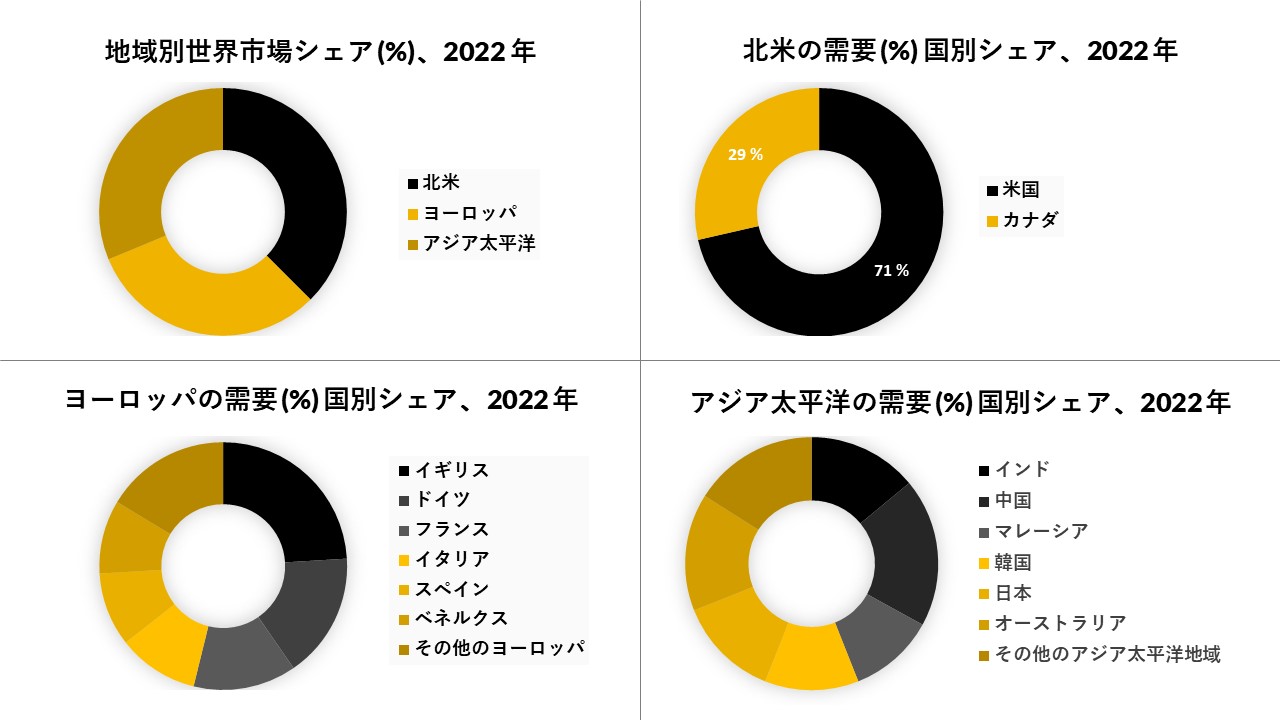洋上風力エネルギーの市場は、2020年から2025年の予測期間中に10%以上のCAGRで成長すると予想されています

洋上風力エネルギーの市場は、2020年から2025年の予測期間中に10%以上のCAGRで成長すると予想されています。調査対象となった市場を牽引する主な要因は、コスト競争力の高まりであり、平均LCOEは50米ドル/MWhです。さらに、既存のオフショア市場の政府は、2030年に向けて目標と数量を増やす予定であり、オフショア設置の大幅な増加と新規プロジェクトの授与につながります。しかし、洋上風力発電システムの高コストをもたらすオフショアの場所への重くて大型の機器の移動は、予測期間中に市場を抑制すると予想される主要な要因です.
- 浮遊洋上風力は、高速風速が運用に有利な環境を作り出し、それによって洋上風力エネルギー市場を牽引する深海でのプロジェクトを楽しむための範囲を作り出すことが期待されています.
・アフリカ及び南米の新興市場は、ブラジル、南アフリカ、チリ等を含む国々が開発の瀬戸際にあり、電力需要が増加しており、今後数年間で風力発電開発の市場機会を提供することが期待されるため、風力発電事業にとって堅調なビジネスチャンスを提供している。さらに、風力発電の巨大な可能性は、そのコストの低下と相まって、近い将来に市場に広範なビジネスチャンスを提供する可能性が高い
- 欧州は予測期間中に市場で大きなシェアを持つと予想されています.
主な市場動向
市場を支配する浮遊構造
・価格下落により風力発電の売上増に繋がっているが、競争の激しい環境により風力タービンメーカー数が減少している。FITからオークションや入札などのより競争力のあるメカニズムへの世界的な移行は、激しい価格競争をさらに激化させています
さらに、技術革新を通じて、タービン機器メーカーはタービンコスト(米ドル/キロワット)の上昇を制限し、質量(キログラム/キロワット)の減少を管理して、タービンの成長を少なくとも12MW.
まで上方へ継続させることができました。
●軽量化により浮体式洋上風力タービンの設置拡大の見通しが開けました.
- 最も高い可能性を秘めた洋上風力資源は、固定構造物の設置が不可能な深海に位置する。フローティングオフショア基礎は、より少ない基礎材料を使用する可能性を提供し、反対側では設置と廃止措置を大幅に簡素化します。フローティング基礎は、陸上の設置が飽和状態に達した国々の中深度のプロジェクトにも魅力的です
欧州は市場を支配する
- 欧州地域は、2019年に洋上風力発電の純設置で世界市場シェアを支配しました.
各国は、エネルギー発電ミックスにおける再生可能エネルギーの割合を増やすことによって、エネルギー生成のための化石燃料への依存度を減らそうとしています。さらに、欧州の現在の風力発電所の保有台数は老朽化しており、2020年から廃炉が大幅に増加すると予想されており、これにより、廃止されたプロジェクトによって生じたギャップを埋めるための投資が促進されると予想されています
- したがって、前述の要因は風力エネルギー市場の成長の機会を提供することが期待され、土地の限られた可用性は、洋上風力エネルギー市場の成長への道を開く
競争環境
世界の洋上風力エネルギー市場は細分化されています。主要企業には、Siemens Gamesa Renewable Energy SA、MHI Vestas Offshore Wind、Xinjiang Goldwind Science & Technology Co. Ltd><.(Goldwind)などがあります。
このレポートを購入する理由:
- エクセル形式の市場予測(ME)シート
- 3ヶ月のアナリストサポート

北米(米国およびカナダ)、ラテンアメリカ(ブラジル、メキシコ、アルゼンチン、その他のラテンアメリカ)、ヨーロッパ(英国、ドイツ、フランス、イタリア、スペイン、ハンガリー、ベルギー、オランダおよびルクセンブルグ、NORDIC(フィンランド、スウェーデン、ノルウェー) 、デンマーク)、アイルランド、スイス、オーストリア、ポーランド、トルコ、ロシア、その他のヨーロッパ)、ポーランド、トルコ、ロシア、その他のヨーロッパ)、アジア太平洋(中国、インド、日本、韓国、シンガポール、インドネシア、マレーシア) 、オーストラリア、ニュージーランド、その他のアジア太平洋地域)、中東およびアフリカ(イスラエル、GCC(サウジアラビア、UAE、バーレーン、クウェート、カタール、オマーン)、北アフリカ、南アフリカ、その他の中東およびアフリカ)
